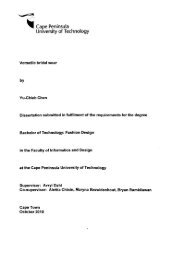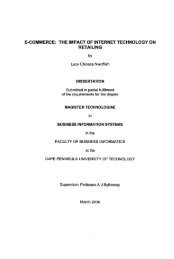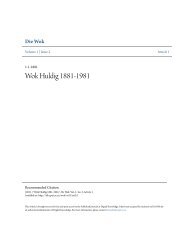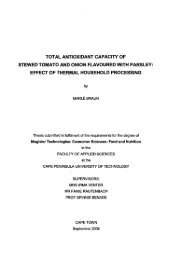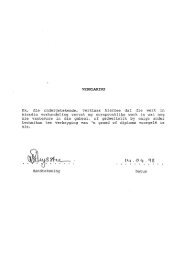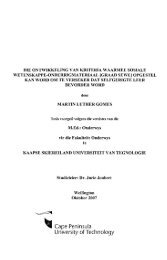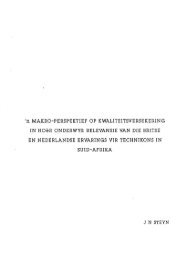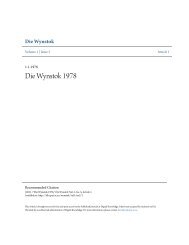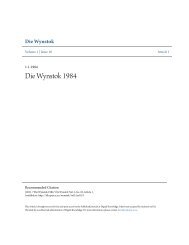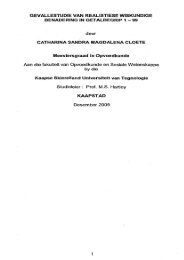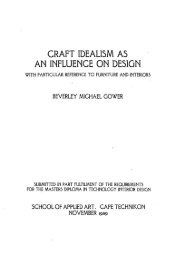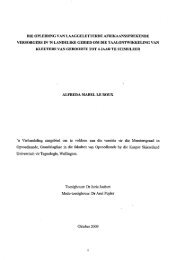the effect of the particle size distribution on non-newtonian turbulent ...
the effect of the particle size distribution on non-newtonian turbulent ...
the effect of the particle size distribution on non-newtonian turbulent ...
Create successful ePaper yourself
Turn your PDF publications into a flip-book with our unique Google optimized e-Paper software.
Chapter 2 Literature Review Page 2.33<br />
• Yield pseudoplastic fluids (Thomas & Wils<strong>on</strong>, 1987). Their analysis showed<br />
that as <str<strong>on</strong>g>the</str<strong>on</strong>g> value <str<strong>on</strong>g>of</str<strong>on</strong>g> <str<strong>on</strong>g>the</str<strong>on</strong>g> flow behaviour index decreases from unity, <str<strong>on</strong>g>the</str<strong>on</strong>g> plot<br />
<str<strong>on</strong>g>of</str<strong>on</strong>g> fricti<strong>on</strong> factor vs Reynolds number c<strong>on</strong>verges towards <str<strong>on</strong>g>the</str<strong>on</strong>g> Newt<strong>on</strong>ian line.<br />
The plot <str<strong>on</strong>g>the</str<strong>on</strong>g>n parallels <str<strong>on</strong>g>the</str<strong>on</strong>g> Newt<strong>on</strong>ian line and eventually diverges downwards<br />
from <str<strong>on</strong>g>the</str<strong>on</strong>g> Newt<strong>on</strong>ian line. It was found that <str<strong>on</strong>g>the</str<strong>on</strong>g> c<strong>on</strong>verging behaviour was<br />
exhibited by low c<strong>on</strong>centrati<strong>on</strong> slurries compared to <str<strong>on</strong>g>the</str<strong>on</strong>g> diverging behaviour,<br />
exhibited by high c<strong>on</strong>centrati<strong>on</strong> slurries.<br />
The equati<strong>on</strong>s <str<strong>on</strong>g>of</str<strong>on</strong>g> <str<strong>on</strong>g>the</str<strong>on</strong>g>ir turbulel)t flow model as applying to pseudoplastic fluids is presented<br />
below.<br />
The thickness <str<strong>on</strong>g>of</str<strong>on</strong>g> <str<strong>on</strong>g>the</str<strong>on</strong>g> viscous sub-layer increases by a factor called <str<strong>on</strong>g>the</str<strong>on</strong>g> area ratio A. shown<br />
graphically in Figure 2.13. The figure shows that <str<strong>on</strong>g>the</str<strong>on</strong>g> area ratio is defined as <str<strong>on</strong>g>the</str<strong>on</strong>g> ratio <str<strong>on</strong>g>of</str<strong>on</strong>g> <str<strong>on</strong>g>the</str<strong>on</strong>g><br />
integrals <str<strong>on</strong>g>of</str<strong>on</strong>g> <str<strong>on</strong>g>the</str<strong>on</strong>g> n<strong>on</strong>-Newt<strong>on</strong>ian and assumed Newt<strong>on</strong>ian rheograms under identical shear<br />
c<strong>on</strong>diti<strong>on</strong>s.<br />
Figure 2.13: Illustrati<strong>on</strong> <str<strong>on</strong>g>of</str<strong>on</strong>g> <str<strong>on</strong>g>the</str<strong>on</strong>g> area ratio<br />
Shear Rate ---...



